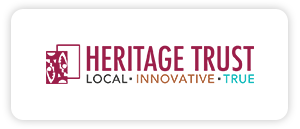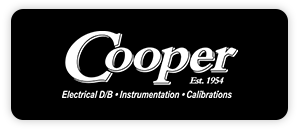Source: Chris Mitchell, Hitachi Business Finance
How is an asset-based loan structured? What are common asset based lending terms?
The question can arise from business owners and lenders alike. Let’s take a look at common structure expectations. It is widely believed to expect 80-90% of accounts receivable (A/R) and 50% of inventory, but that could be a mistake for the lender and the borrower. There are many factors to consider in setting advance rates for the assets:
Balance Sheet & Earnings:
Does the borrower have a strong balance sheet and tangible net worth or minimal equity? More traditional lending institutions will usually require stronger balance sheets and earnings while non-traditional and alternative asset-based lenders work with borrowers that are more leveraged and perhaps have had recent earnings missteps. The non-traditional lender will monitor the collateral a lot closer and more frequently than the bank to mitigate their additional risk. Additionally, earnings history and projections can have an impact on structures.
Accounts Receivable:
80-90% advances on receivables are common, but let’s take a closer look. Ineligibles have the biggest impact on availability.
What are the most common ineligibles?
• A/R that has gone over 90 days from invoice date (unless longer sales terms are commonly practiced for an industry)
• Prebilling: billing in advance of service performed or product delivered
• Crossage/taint: excluding a borrower’s customer from availability if 20-50% of the invoices are over 90 days; collection of the entire account then becomes questionable
• Progress/project billing: can be problematic in collecting if interruptions/delays of services performed
• Weak account debtor credit information: particularly a problem for higher A/R exposures and concentrations
• Contra Accounts: when a customer is also a vendor, resulting in possible offsets against A/R
• Deposits held from customers: resulting in possible offsets against existing AR
• Foreign customers unless foreign credit insurance is in place
Other A/R ineligibles include intercompany, federal government (unless in compliance with the Federal Assignment of Claims Act of 1940), billed but not shipped, disputed or offset invoices, and others. In the normal course of business, invoices may perform well. Receivable performance can reveal its weaknesses when a company runs into adversity.
Inventory:
In order to lend prudently on inventory, a close analysis should be considered, particularly its liquidity value in the event of liquidation.
Common ineligibles of inventory are:
• Consigned inventory: inventory that will not be paid for until the customer is paid by their customer
• Excess or slow moving inventory: inventory that has not turned in over a year. Could be stale or no longer sellable
• In-transit inventory: inventory on the books but still awaiting arrival to the borrower
Other considerations for lending on inventory are return policies, inventory accounting systems (perpetual or physical?), inventory at other locations, obsolete/discontinued/excess, work-in-process, perishables, and others.
Many asset-based loans will have a determined percentage on raw materials and a determined percentage on finished goods. Considerations for lending on inventory should be what percent of the goods can be sold back to vendors, competitors, and customers and at what recovery rate. Certainly liquidation of inventory draws a lower recovery rate than selling in the normal course of business. For example, raw aluminum rolls can have a higher liquidation value than a specialized product with limited channels of liquidation. To simply provide a standard percent on all A/R and inventory can be a mistake.
Many asset-based lenders will audit a borrower’s books and records, closely examining historical A/R performance, inventory turnover, and accounting practices by an audit firm with experience in analyzing collateral and its expected collection amounts. Properly monitoring the values of the assets helps mitigate the risk of the lender potentially “overlending” when collateral values start to decrease relative to the loan balance.
Hitachi Business Finance provides monitored asset-based loans up to $10 million to small- and mid-size emerging growth companies.
About Scale Finance
Scale Finance LLC (www.scalefinance.com) provides contract CFO services, Controller solutions, and support in raising capital, or executing M&A transactions, to entrepreneurial companies. The firm specializes in cost-effective financial reporting, budgeting & forecasting, implementing controls, complex modeling, business valuations, and other financial management, and provides strategic help for companies raising growth capital or considering M&A/recapitalization opportunities. Most of the firm’s clients are growing technology, healthcare, business services, consumer, and industrial companies at various stages of development from start-up to tens of millions in annual revenue. Scale Finance has multiple offices in the Carolinas including Charlotte, Raleigh/Durham, Greensboro, and Wilmington with a team of more than 45 professionals serving more than 130 companies throughout the region.







